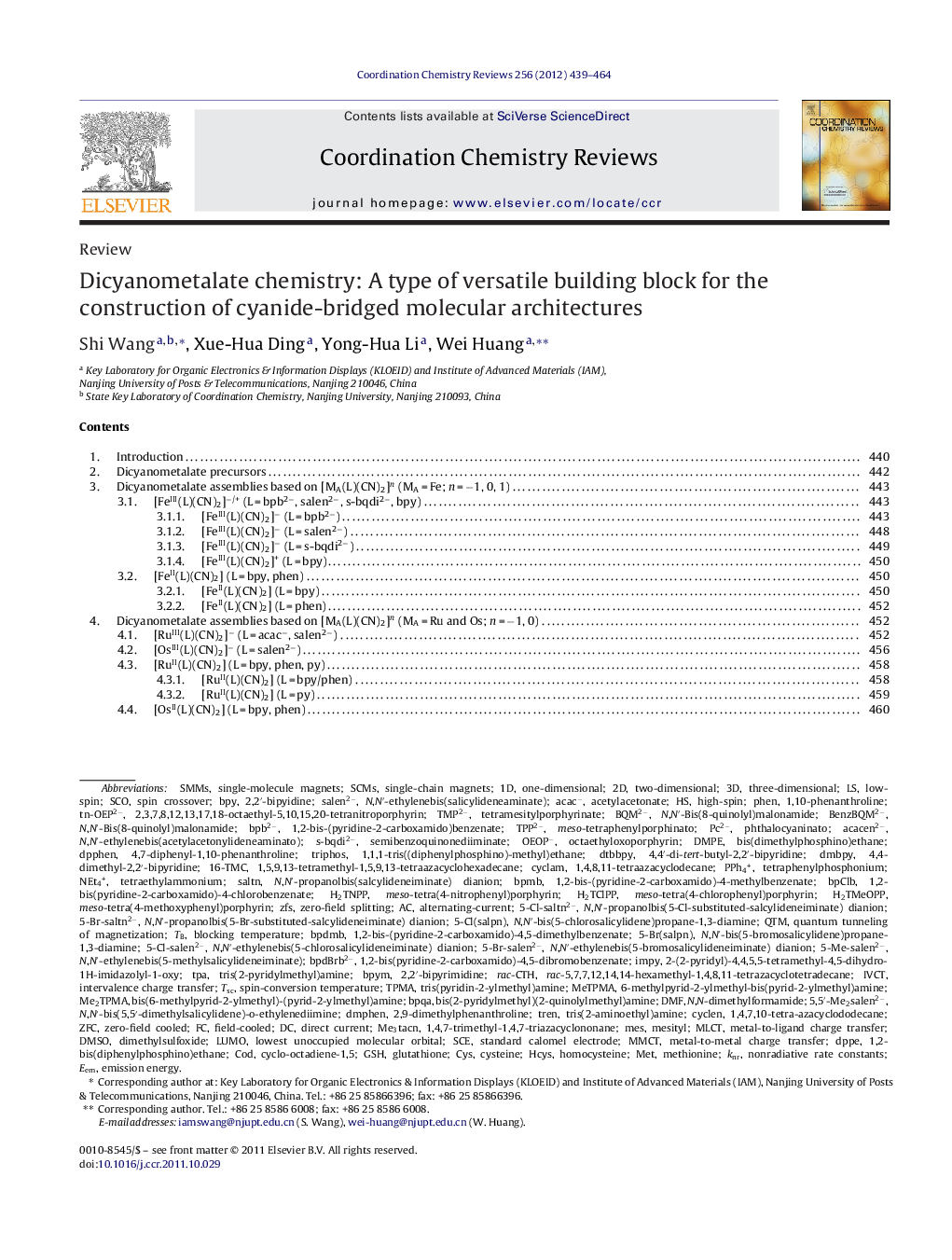| Article ID | Journal | Published Year | Pages | File Type |
|---|---|---|---|---|
| 1301096 | Coordination Chemistry Reviews | 2012 | 26 Pages |
Cyanide-bridged molecule-based magnetic materials with reduced dimensionality, such as single-molecule magnets (SMMs) and single-chain magnets (SCMs), have attracted great research interest during the last decade. Among the cyanide-based molecular precursors with ample coordinating capability, we note the ability of the dicyanometalate [MA(L)(CN)2]n (MA = FeIII/II, RuIII/II, OsIII/II, CoII, CrIII; n = −1, 0, +1; L = polydentate blocking ligand) to link various metal ions leads to a wide diversity of structural architectures ranging from discrete polynuclear complexes to various one-dimensional (1D), two-dimensional (2D) and three-dimensional (3D) assemblies. Some of these are promising cyanide-bridged SMMs, SCMs, switchable molecular materials or chemosensors with good light absorbing properties. The use of blocking tetradentate organic ligands results in a number of polynuclear compounds containing di-, tri-, tetra-, dodecanuclear and multidimensional metal-cyanide architectures. Here we review the structural topologies of these complexes and their related magnetic, spectroscopic properties, highlight typical examples, and point out the main possible directions that remain to be developed in this field. From the crystal engineering point of view, the compounds reviewed here should provide useful information for further design and investigation on this elusive class of dicyanometalte-bearing compounds.
Graphical abstractThe use of dicyanometalate precursor trans-[MA(L)(CN)2]n, cis-[MA(L)(CN)2]n or [Co(triphos)(CN)2] in reactions with [MBLxL′y]m+ has yielded a number of clusters containing di-, tri-, tetra-, dodecanuclear clusters and various nD assemblies (n = 1–3).Figure optionsDownload full-size imageDownload high-quality image (181 K)Download as PowerPoint slideHighlights► trans-[MA(L)(CN)2]n, cis-[MA(L)(CN)2]n and [Co(triphos)(CN)2] as dicyanometalate precursors. ► Dicyanometalate precursors result in clusters and nD assemblies (n = 1–3). ► Cyano-bridged compounds with various structures and magnetic/spectroscopic properties ► The magnetic/spectroscopic properties are related with the structural topologies.
